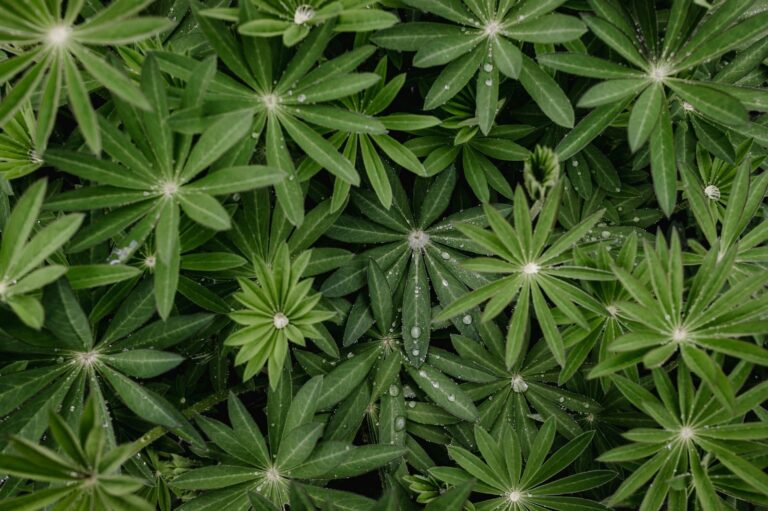Are your cannabis plants growing tall and lanky with lower buds struggling to catch the light? Many growers face the same frustrating issues: uneven growth, weak branches, and short yields. These problems often come from letting the plant grow without proper structure or support.
That’s where weed cropping steps in, especially a technique called super cropping. This method goes beyond basic shaping. By applying targeted stress to the plant, you train it to grow stronger and more efficiently. Super cropping changes how your cannabis behaves, pushing it to build thicker stems, spread its canopy, and deliver more energy to bud sites.
The results can be dramatic, with better structure, higher potency, and bigger harvests all stemming from learning this one method. Ready to see how it works? Let’s break it down so you can start cropping cannabis like a pro.
What Is Super Cropping And Why It Matters?
Super cropping is a high-stress training (HST) technique that forces your cannabis plants to adapt and grow stronger. It may sound aggressive, but it’s highly effective. You apply controlled pressure to the stems by pinching and gently bending them until the inner tissue softens. This action causes just enough internal damage to trigger a defensive response from the plant, without killing or permanently harming it.
What happens next is all part of the plant’s survival instinct. The plant sends out repair hormones to the damaged area. Doing so strengthens the bent branches, creating thick, knuckled joints that can later support heavier buds. This stress also redirects growth hormones away from the main cola and into side branches.
Here’s how it can benefit your growth:
- Increased Yield: Super cropping boosts your plant’s yield by encouraging lateral growth. By bending and slightly damaging branches, you create more sites for bud development, leading to larger, more abundant harvests.
- Improved Light Penetration: Bending branches lets light reach more areas of the plant, improving photosynthesis. This results in healthier plants and more robust growth.
- Stronger Branches: The slight damage from super cropping stimulates the plant to strengthen its branches. As they heal, the branches become more resilient, capable of supporting heavier buds without risk of breaking.
- Better Airflow: By spreading out the branches, you promote better air circulation. This reduces the chances of mold and mildew, which thrive in stagnant, humid conditions.
- Enhanced Stress Resistance: Super cropping encourages the plant to develop stronger tissue. Over time, this strengthens its ability to handle environmental stress, such as temperature fluctuations or slight mishandling.
- Increased Cannabinoid Production: The healing process triggered by super cropping can enhance the production of cannabinoids and terpenes. This could lead to a more potent final product with improved flavor and aroma.
- More Efficient Use of Space: Super cropping optimizes the available space by encouraging lateral growth. This is particularly useful in small grow environments like tents or confined rooms, where maximizing every inch of space is essential.
- Faster Growth Recovery: Because super cropping is a form of low-stress training, your plants tend to recover quickly. This allows you to repeat the process for multiple cycles, speeding up overall plant growth and boosting your yield.
- Greater Control Over Plant Shape: Super cropping gives you more control over your plant’s shape and structure. You can direct growth, optimize height, and manage canopy density to suit your space and growing goals.
In short, super cropping uses stress to your benefit. It forces your plant to become more efficient, productive, and potent, all without fancy equipment or expensive upgrades. Now, let us understand when to super crop your cannabis plants.
Optimal Timing for Super Cropping
Super cropping is a high-stress training technique that boosts yield by bending branches to redirect growth. To get the best results, you need to time it right. Here’s when to do it:
- Vegetative Stage: Super crop during the vegetative stage when the plant is actively growing. This gives it time to heal and redirect energy to new growth before flowering begins.
- When Plants Are Young but Established: Start once your plant has at least 3 to 4 nodes and strong, healthy stems. The plant should be big enough to handle stress but not too developed.
- While Stems Are Still Flexible: Bend the stems when they are green and pliable, not woody. Flexible stems are less likely to snap and recover more easily.
- Before the Stretching Phase: Apply the technique just before or right after switching to 12/12 light. This timing allows the plant to recover and respond with a burst of growth.
- Avoid Flowering Stage: Avoid super cropping during flowering. At this stage, the plant channels its energy into bud production, making it less capable of healing. This stress can reduce bud quality and lower your overall yield.
- Only on Healthy Plants: Never super crop weak, nutrient-deficient, or freshly transplanted plants. They won’t have the strength to bounce back.
- After Watering or Feeding: Super crop a day or two after watering or feeding. Hydrated, nourished plants recover faster from the stress.
- Stagger the Training: If you plan to bend multiple branches, do it in stages. Spread the process over a few days to not overwhelm the plant.
Here’s a table to make you understand better.
Timing Tip | Why It Matters |
Vegetative Stage | Gives time to heal and grow before flowering. |
Established Plants | Start at 3–4 nodes with strong, healthy stems. |
Flexible Stems | Green stems bend easier and heal faster. |
Before Stretch Phase | Do it before or just after switching to 12/12 light for best response. |
Avoid Flowering Stage | Stress here can lower yield and slow recovery. |
Healthy Plants Only | Weak or stressed plants may not bounce back. |
After Watering/Feeding | Hydrated, nourished plants recover faster. |
Stagger Training | Spread out bending to avoid overwhelming the plant. |
Watch your plant’s behavior closely. If growth slows or leaves droop after cropping, that’s a signal to back off and allow recovery before applying more stress. Also, check for signs of overwatering or nutrient issues as these can compound stress and delay recovery.
This is where a tool like PlanaCan helps. It simplifies scheduling by letting you build and automate your grow, cropping, and harvesting process with customizable templates. Map out each step from planting to harvest for specific strains or cycles. Once the template is ready, add tasks to a calendar with a few clicks to stay consistent and avoid stressing your plants.
So, what are the necessary tools used in super cropping cannabis plants? Let us understand.
Necessary Tools for Super Cropping
Here’s a comprehensive list of the essential tools and tips for performing this method effectively:
- Pruning Scissors or Shears: Sharp, clean scissors are vital for making precise cuts. Avoid dull tools to prevent unnecessary damage to your plants.
Tip: Always sterilize your shears with rubbing alcohol before and after use to minimize the risk of spreading diseases between plants.
- Plant Ties or Soft String: To support branches after you’ve bent them, you’ll need soft ties or string that won’t damage the plant. Velcro straps are a popular choice.
Tip: Choose adjustable ties that can be tightened or loosen as the plant grows. Avoid anything too tight that could constrict the stem.
- Gardening Gloves: Protect your hands when handling plants, especially when you’re bending branches and applying pressure. Gloves also prevent any accidental cuts or scratches.
Tip: Opt for gloves with a snug fit to ensure better control and dexterity when working with delicate branches.
- Support Stakes: These help hold branches in place as they heal. Stakes are handy for plants that may need extra support after bending.
Tip: Place stakes before bending branches to avoid disturbing them after they’re positioned. This will reduce stress on the plant.
- Plant Sterilizer or Alcohol: Use to sterilize your tools before and after use to prevent disease transmission between plants.
Tip: Make sure to use a 70% alcohol solution or a commercial plant sterilizer to effectively kill harmful pathogens.
- Humidity Dome or Plastic Wrap (Optional): To help plants recover from stress, you can use a humidity dome or wrap the affected areas with plastic to maintain moisture and promote healing.
Tip: Only use this method for plants that show signs of stress after super cropping. Avoid keeping the humidity too high for too long, as it can encourage mold growth.
- Spray Bottle (with Water or Diluted Nutrients): Helps hydrate stressed areas after bending and can be used to apply foliar sprays.
Tip: Lightly mist the plant before and after bending to reduce shock and keep tissues flexible.
- Silica Supplements (Optional but Recommended): Strengthens cell walls, making plants more resilient to the stress caused by super cropping.
Tip: Add silica to your nutrient mix a few days before and after super cropping for stronger branches and quicker recovery.
- Notebook or Grow Journal: Keeps track of which branches were super cropped, when, and how the plant responded.
Tip: Record how long it takes for knuckles (the healed, bent areas) to form and adjust your technique accordingly over time.
- LED Grow Light (if indoors): Ensures plants receive adequate light while recovering. Super cropping temporarily slows vertical growth, so strong, consistent light helps them redirect energy to lateral growth.
Tip: Keep lights at an optimal distance to avoid burning weakened branches, but still encourage bushy growth.
- Plant Clips or Low-Stress Training (LST) Gear: Useful for combining techniques. You can use clips to train branches in new directions once they’ve healed.
Tip: Use super cropping in tandem with LST to maximize canopy exposure without stressing the plant too much at once.
Now, let us discuss the steps used to super crop the cannabis plants below.
How To Super Crop Step-by-Step
Here’s how to do it:
- Choose the Right Plant: Select a healthy, mature plant in the vegetative stage (about 4 to 6 weeks old). Plants in this stage are more flexible and resilient, making them ideal for super cropping.
Tip: Avoid plants that are freshly transplanted or showing signs of stress.
- Identify the Right Branch: Focus on thicker, more mature stems. These are better suited for the technique and will handle the stress without breaking. Avoid younger or more delicate branches.
Tip: Choose branches that get strong light, since they respond better to training.
- Apply Gentle Pressure: Pinch the stem gently between your thumb and forefinger. Apply light pressure until the stem softens. You don’t want to snap it, just create slight damage to encourage stronger growth.
Tip: Warm your fingers a bit to help soften the stem more easily.
- Bend the Stem: Once softened, carefully bend the stem at a 90-degree angle. Do this slowly to avoid snapping. The goal is to stress the plant just enough to trigger new growth.
Tip: If the stem feels too stiff, wait a couple of days and try again.
- Support the Plant: After bending, secure the stem with a plant tie or stake to keep it steady. This helps the plant heal while holding its new shape.
Tip: Use soft ties or tape to avoid cutting into the stem. - Repeat the Process: You can super crop more than one branch, but give each one time to recover. Doing too many at once can slow growth.
Tip: Start with one or two branches, then space out the rest over several days.
- Monitor Recovery: Watch the plant for signs of healing and new growth around the bent area. Some drooping is normal at first, but it should bounce back soon.
Tip: Keep the environment stable to help recovery—steady light, humidity, and feeding. Tools like PlanaCan help create detailed harvest reports that track cultivation decisions and their effects on yield. With all the data in one place, it’s easier to identify trends, understand what works, and fine-tune your methods for better results and increased profitability.
- Adjust As Needed: As the plant grows, gently reposition branches to improve light exposure. Take it slow to avoid adding more stress.
Tip: Use ties to guide branches gradually instead of forcing quick movement.
Now, let us understand how to handle the challenges when it comes to super cropping your cannabis plant.
How To Handle Super Cropping Challenges
Super cropping can be an effective way to increase your plant’s yield and improve its structure, but it comes with its own challenges. Here’s how you can manage them successfully:
- Know Your Timing: Timing is crucial for super cropping. Aim to do it early in the vegetative stage when your plant is strong enough to handle stress but still flexible enough for manipulation. This ensures better recovery and growth.
To stay on top of timing, tools like PlanaCan help. It helps you stay on the correct timing by giving you access to the tool through desktop and mobile. If you are out of your growing space, you can still set a reminder to schedule your crop management.
- Handle with Care: Be gentle when bending the stems. Apply gradual pressure without forcing the bend. The goal is to create a controlled break, not damage the plant. If done properly, the plant will heal and become stronger.
- Watch for Stress Symptoms: After super cropping, it’s normal for your plant to show signs of stress, such as wilting or yellowing leaves. Keep calm; these symptoms usually subside as the plant recovers. Ensure the environment remains stable, and give it time to heal.
- Maintain Even Growth: Keep an eye on how your plant is growing. Super cropping can sometimes lead to uneven development. If this happens, adjust your training techniques to ensure your plant’s canopy grows evenly and receives equal light exposure.
- Stay Consistent: Super cropping works best when done gradually. Avoid trying to make major adjustments all at once. By making smaller, consistent changes over time, your plant will adapt better and show stronger growth.
- Monitor Nutrient Levels: Super cropping puts extra stress on the plant, which can affect nutrient uptake. Ensure your plant receives the right balance of nutrients to support recovery. Consider using a mild nutrient solution to help it bounce back faster.
- Use Support if Necessary: Some plants may need extra support after super cropping, especially if you’ve bent larger stems. Use stakes, ties, or a trellis to stabilize the branches while they heal and strengthen.
- Practice Proper Pruning: Super cropping often pairs well with pruning, but don’t overdo it. Remove only the lower or less productive branches. Over-pruning can cause more stress and hinder recovery, so be selective in your pruning decisions.
- Adjust Environmental Conditions: The plant’s environment plays a significant role in its recovery. Keep humidity and temperature stable to reduce stress. Fluctuations in these conditions can slow recovery and even cause rot, so maintain an optimal environment.
- Understand Your Plant’s Genetics: Different strains react differently to super cropping. Indicas tend to be more resilient, while sativas may be more sensitive. Knowing your plant’s genetics will help you decide how aggressively to super crop and which recovery strategies to use.
So, how can we integrate super cropping with other available techniques to ensure a healthy cannabis yield? Let us understand this below.
Integrating Super Cropping with Other Techniques
Here’s how you can integrate super cropping with other methods for maximum efficiency.
1. Super Cropping and Low Stress Training (LST)
- How it Works: LST involves gently bending branches to encourage horizontal growth, while super cropping focuses on snapping stems to create stronger, bushier plants. For example, after super cropping, you can use LST to spread out the remaining branches, maximizing light exposure and airflow to boost bud development.
- Why Combine Them: These techniques complement each other by maximizing canopy spread and stimulating more growth. LST keeps the plant in a low profile, and super cropping strengthens the plant’s structure, leading to better bud production.
2. Super Cropping with High Stress Training (HST)
- How it Works: HST techniques, like topping and defoliation, involve more severe manipulation of the plant. Combining them with super cropping adds an extra layer of stress, encouraging faster recovery and potentially larger yields.
- Why Combine Them: If your plant is healthy and well-established, this combination maximizes branching and increases bud sites. Super cropping helps redistribute energy, promoting larger buds.
3. Super Cropping and Sea of Green (SOG)
- How it Works: Sea of Green focuses on growing many small plants closely together. Super cropping, on the other hand, is typically done on individual plants to improve their shape and structure.
- Why Combine Them: If you’re growing in a limited space, super cropping helps manage plant height and creates a denser canopy. It ensures your plants develop evenly, making it easier to maintain a Sea of Green setup.
4. Super Cropping with SCROG (Screen of Green)
- How it Works: SCROG involves using a screen to support plant growth and encourage horizontal growth across the canopy. When paired with super cropping, your plants recover faster and create a more even canopy that fills the screen.
- Why Combine Them: This integration maximizes light exposure to all parts of the plant, resulting in higher yields. Super cropping strengthens the plants, making them more resilient during the SCROG process.
5. Super Cropping and Environmental Control
- How it Works: Controlling factors like light, temperature, and humidity is essential for any cultivation method. Integrating super cropping with optimal environmental conditions ensures your plants recover quickly and thrive under the added stress.
- Why Combine Them: Proper environmental control supports plant healing, enhancing the benefits of super cropping and ensuring your plants stay healthy throughout the process.
6. Super Cropping and Nutrient Management
- How it Works: Super cropping stresses the plant, so it needs proper nutrition to recover. Managing your nutrient regimen, especially after super cropping, is critical for fast healing and continued growth.
- Why Combine Them: Boosting nutrient intake, particularly with nitrogen and potassium, accelerates recovery and strengthens the plant’s stems for future growth. Proper nutrient management maximizes the benefits of super cropping and ensures overall plant health.
7. Super Cropping with Defoliation
- How it Works: Defoliation involves removing leaves to improve light penetration and airflow. Combining it with super cropping helps manage the plant’s shape and directs energy toward bud development instead of excessive foliage.
- Why Combine Them: This combination focuses growth on key bud sites while ensuring proper airflow. Be mindful not to remove too many leaves, as plants still need them for healthy photosynthesis.
8. Super Cropping with Vertical Growing Systems
- How it Works: Vertical growing systems maximize space by encouraging upward or stacked plant growth. Super cropping controls plant height and promotes even growth in vertical setups.
- Why Combine Them: By integrating super cropping with a vertical system, you ensure plants remain manageable in size while filling available space effectively, leading to higher yields per square foot.
9. Super Cropping with Companion Planting
- How it Works: Companion planting involves growing beneficial plants alongside your cannabis, such as herbs that repel pests or nitrogen-fixing plants. Super cropping helps control the size of your cannabis plants, preventing them from overshadowing companion plants.
- Why Combine Them: This combination creates a balanced ecosystem, promoting plant health, minimizing pest issues, and ensuring cannabis plants don’t crowd out beneficial companions.
10. Super Cropping and Proper Pruning
- How it Works: Pruning involves cutting back certain branches and leaves to encourage healthy growth. When paired with super cropping, it fine-tunes plant structure, optimizes airflow, and directs energy into productive areas.
- Why Combine Them: Pruning in combination with super cropping enhances the development of multiple strong colas, improving overall yield and plant structure.
Conclusion
Super cropping is a powerful technique that goes beyond just bending branches—it’s a strategic approach that unlocks the full potential of your cannabis plants. Master it, and you’ll experience stronger growth, increased yields, and enhanced cannabinoid profiles. With some practice, super cropping will quickly become an essential part of your cultivation strategy.
For even better results, PlanaCan is here to support you. It streamlines your task management by allowing you to define and automate every step of the cultivation process. Whether for specific strains or harvest cycles, you can create customizable templates and schedule tasks effortlessly, ensuring a smooth and consistent workflow.
It also offers a clear, visual timeline, making it easier to plan and manage tasks from months ahead to day-to-day activities. It centralizes everything, so no task goes unnoticed, and you can easily adjust to changing needs.
Want to elevate your cannabis cultivation process? Schedule a free call today.




